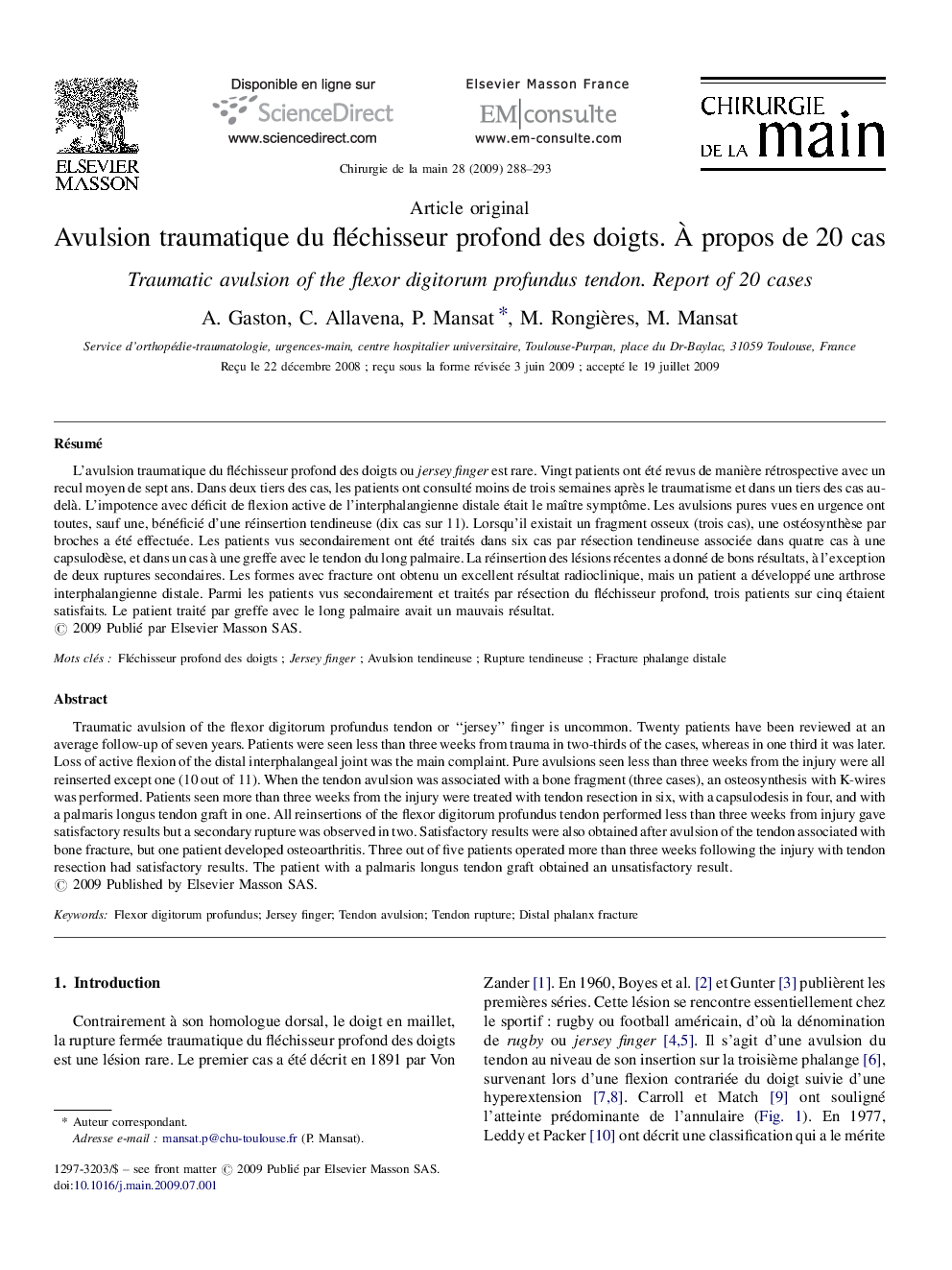| Article ID | Journal | Published Year | Pages | File Type |
|---|---|---|---|---|
| 4049571 | Chirurgie de la Main | 2009 | 6 Pages |
RésuméL’avulsion traumatique du fléchisseur profond des doigts ou jersey finger est rare. Vingt patients ont été revus de manière rétrospective avec un recul moyen de sept ans. Dans deux tiers des cas, les patients ont consulté moins de trois semaines après le traumatisme et dans un tiers des cas au-delà. L’impotence avec déficit de flexion active de l’interphalangienne distale était le maître symptôme. Les avulsions pures vues en urgence ont toutes, sauf une, bénéficié d’une réinsertion tendineuse (dix cas sur 11). Lorsqu’il existait un fragment osseux (trois cas), une ostéosynthèse par broches a été effectuée. Les patients vus secondairement ont été traités dans six cas par résection tendineuse associée dans quatre cas à une capsulodèse, et dans un cas à une greffe avec le tendon du long palmaire. La réinsertion des lésions récentes a donné de bons résultats, à l’exception de deux ruptures secondaires. Les formes avec fracture ont obtenu un excellent résultat radioclinique, mais un patient a développé une arthrose interphalangienne distale. Parmi les patients vus secondairement et traités par résection du fléchisseur profond, trois patients sur cinq étaient satisfaits. Le patient traité par greffe avec le long palmaire avait un mauvais résultat.
Traumatic avulsion of the flexor digitorum profundus tendon or “jersey” finger is uncommon. Twenty patients have been reviewed at an average follow-up of seven years. Patients were seen less than three weeks from trauma in two-thirds of the cases, whereas in one third it was later. Loss of active flexion of the distal interphalangeal joint was the main complaint. Pure avulsions seen less than three weeks from the injury were all reinserted except one (10 out of 11). When the tendon avulsion was associated with a bone fragment (three cases), an osteosynthesis with K-wires was performed. Patients seen more than three weeks from the injury were treated with tendon resection in six, with a capsulodesis in four, and with a palmaris longus tendon graft in one. All reinsertions of the flexor digitorum profundus tendon performed less than three weeks from injury gave satisfactory results but a secondary rupture was observed in two. Satisfactory results were also obtained after avulsion of the tendon associated with bone fracture, but one patient developed osteoarthritis. Three out of five patients operated more than three weeks following the injury with tendon resection had satisfactory results. The patient with a palmaris longus tendon graft obtained an unsatisfactory result.
